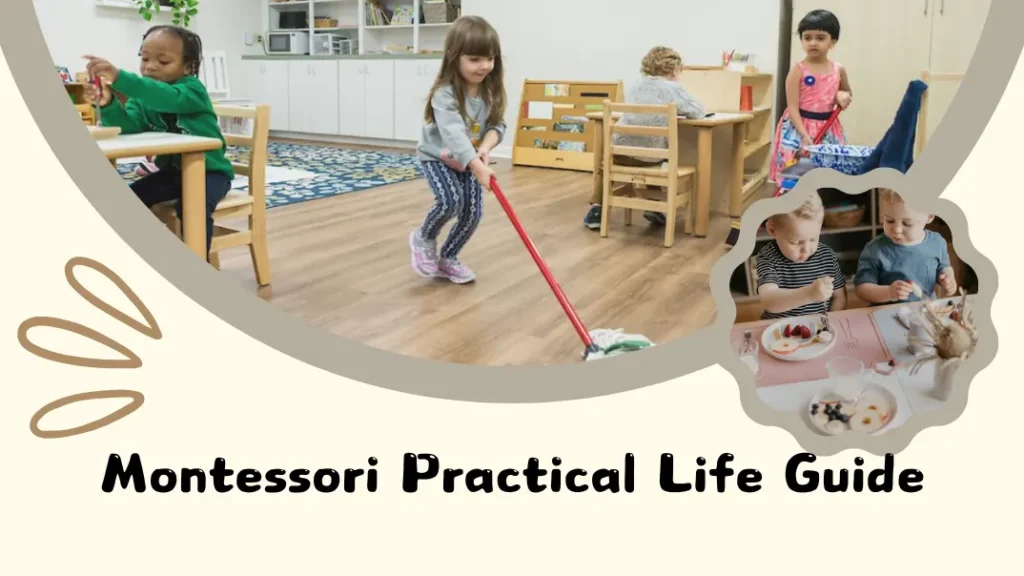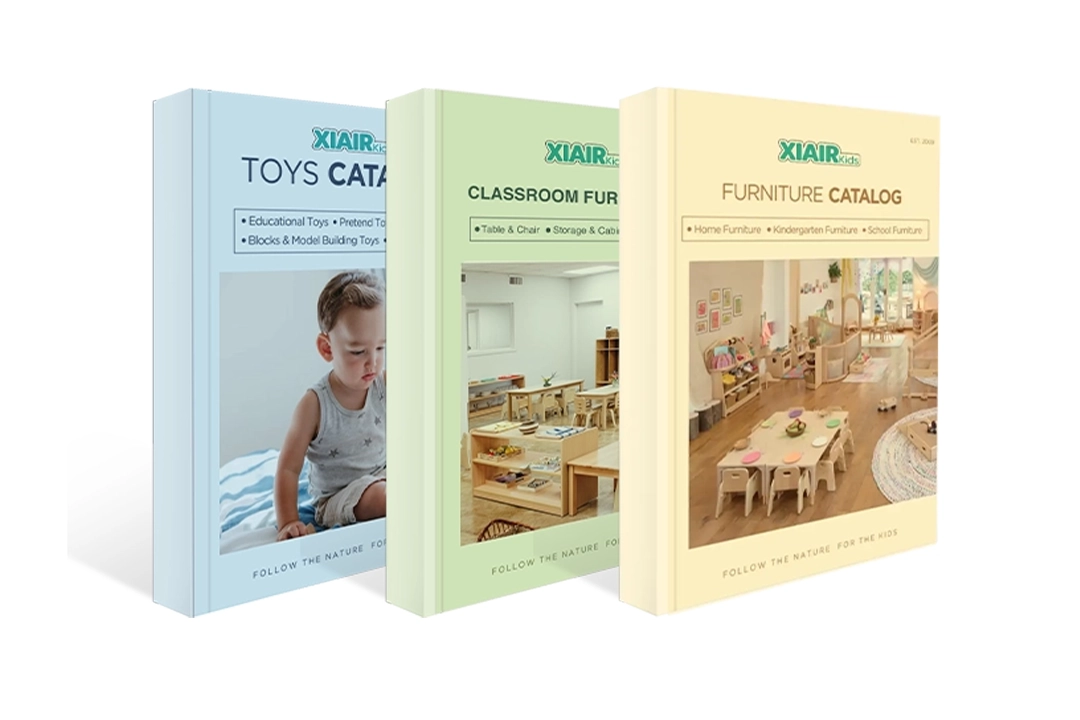Are you looking to cultivate independence, confidence, and responsibility in children? The Montessori method offers a powerful tool through its Montessori practical life activities. These exercises teach essential life skills and help children build focus, motor coordination, and a sense of accomplishment.
Montessori practical life, a cornerstone of the Montessori curriculum, introduces children to meaningful tasks that reflect real-world responsibilities. These activities, from pouring water to dressing frames, serve as a foundation for personal growth.
Are you curious about how these activities transform learning? Let’s explore the details of these essential lessons, their benefits, and their implementation.
What is Montessori Practical Life?
Montessori Practical Life involves activities that teach children everyday tasks. These exercises are designed to build independence, concentration, and physical coordination. Unlike traditional teaching, Montessori focuses on letting children actively participate in their environment rather than passively observing.
Activities include pouring, cleaning, tying shoelaces, and more. These tasks aren’t just chores but opportunities for children to learn sequencing, develop problem-solving skills, and build confidence.
Montessori Practical Life activities prepare children for both academic challenges and real-world responsibilities.
Importance of Practical Life in Montessori
The importance of practical life in Montessori cannot be overstated. These activities are designed to meet the developmental needs of children at every stage.
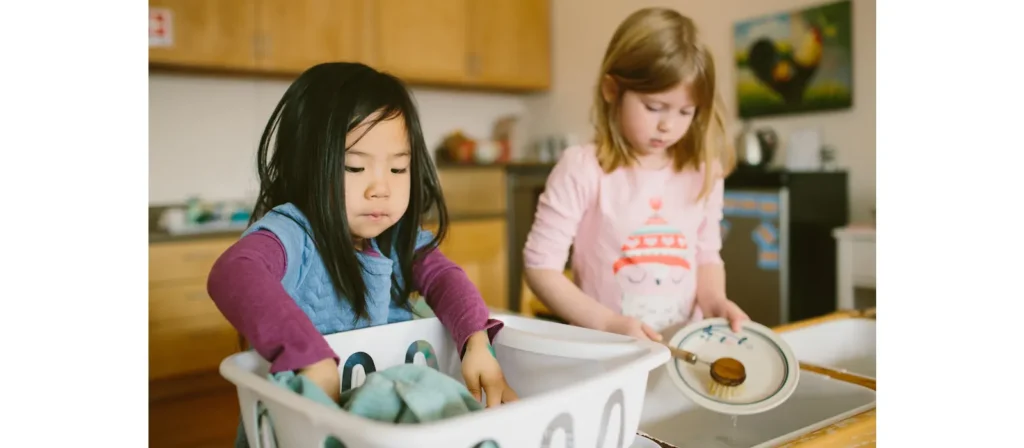
Key Reasons for Practical Life Activities:
- Independence: Tasks like dressing and cleaning empower children to handle responsibilities.
- Coordination: Montessori practical life exercises refine fine and gross motor skills.
- Responsibility: Caring for themselves and their environment teaches accountability.
- Focus: Repeated activities build concentration and persistence.
- Social Awareness: Grace and courtesy exercises teach empathy and respect.
These benefits make practical life skills Montessori an essential part of childhood development.
What are the Purposes and Goals of Practical Life Exercises?
The practical life area of the Montessori curriculum has specific objectives tailored to children’s holistic development.
- To teach independence and self-care through engaging, purposeful tasks.
- To instill order and discipline by organizing surroundings.
- To build confidence by mastering real-life skills.
Characteristics of Practical Life in Montessori
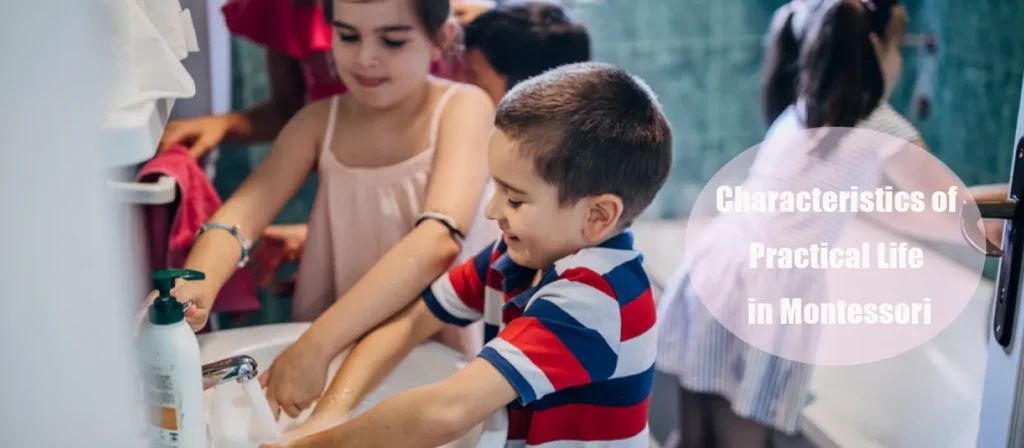
Characteristics of Practical Life in Montessori set these activities apart from traditional methods.
- Child-Centered: Activities use Montessori practical life materials scaled to the child’s size and ability.
- Repetitive: Repetition fosters mastery and builds confidence.
- Purposeful: Tasks are based on real-world scenarios, such as preparing food or cleaning.
- Self-Correcting: Children learn from their mistakes, enhancing problem-solving skills.
- Structured but Flexible: Activities have clear steps but allow for exploration and creativity.
These features ensure that Montessori classroom practical life activities are educational and deeply satisfying for children.
Four Main Groups of Montessori Practical Life
Personal Care
Children develop self-reliance by learning to care for their personal needs.
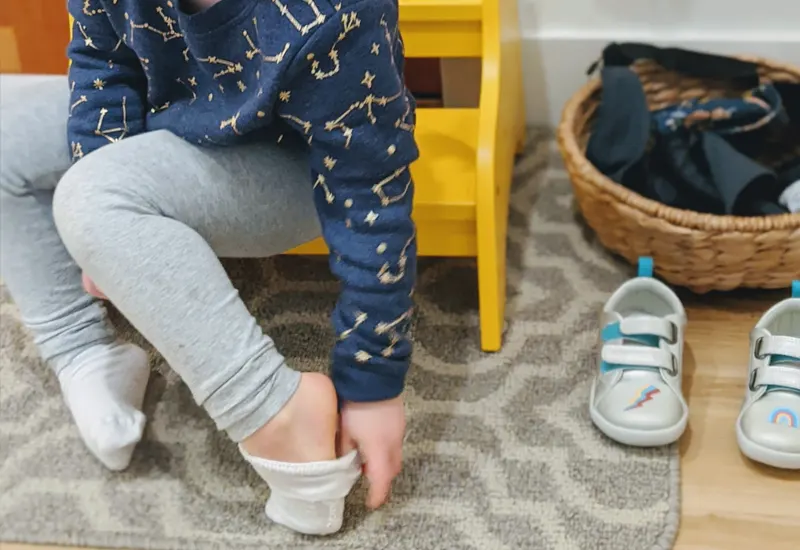

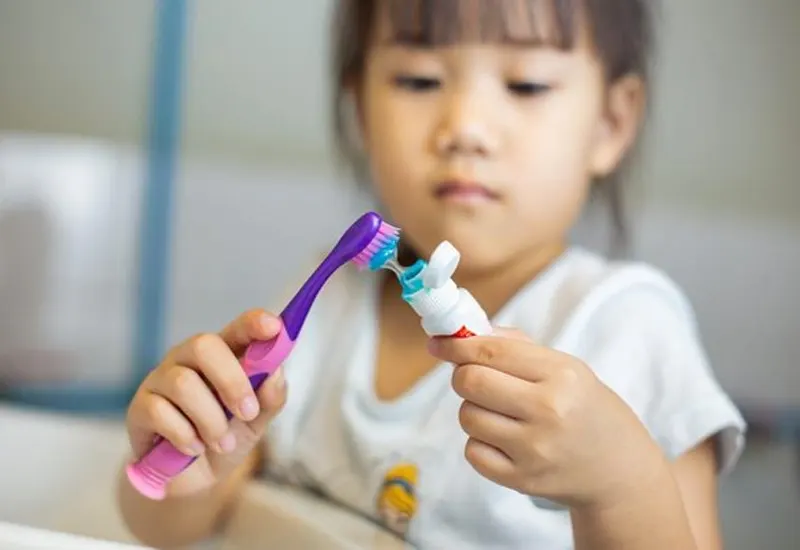
- Brushing teeth.
- Washing hands.
- Tying shoelaces.
- Dressing and undressing.
- Using a comb or brush.
Caring for the Environment
This group encourages respect for the child’s surroundings.
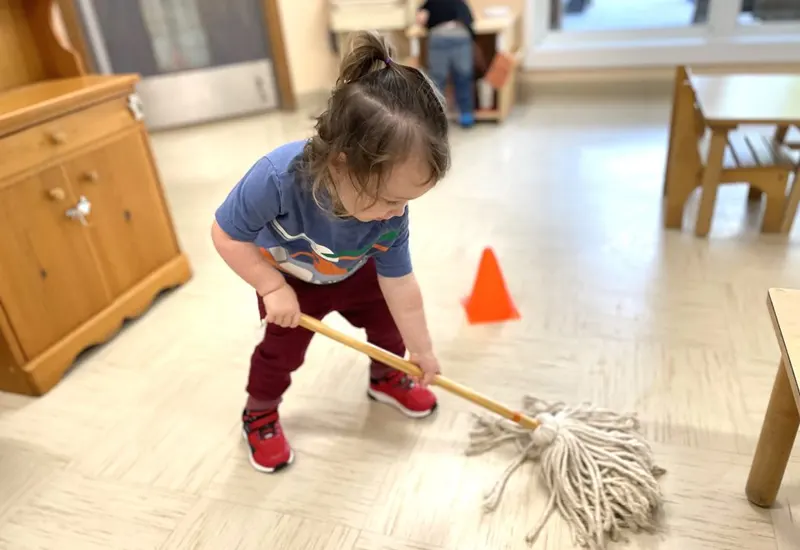
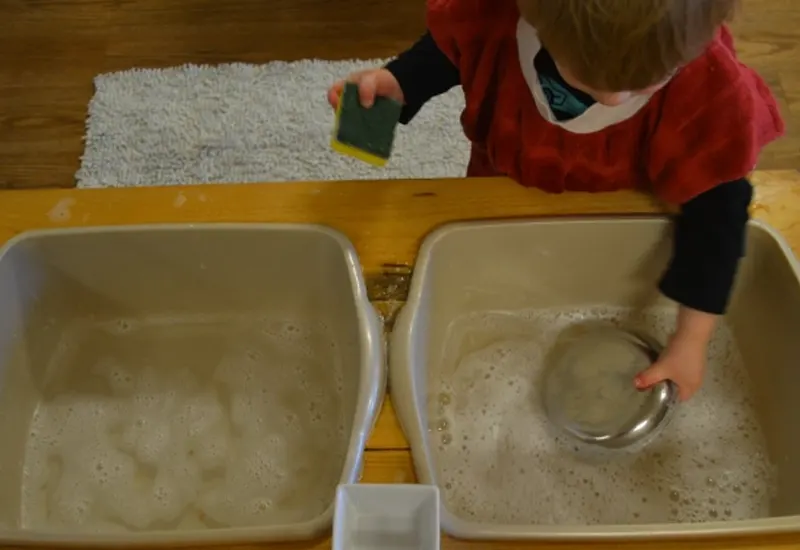
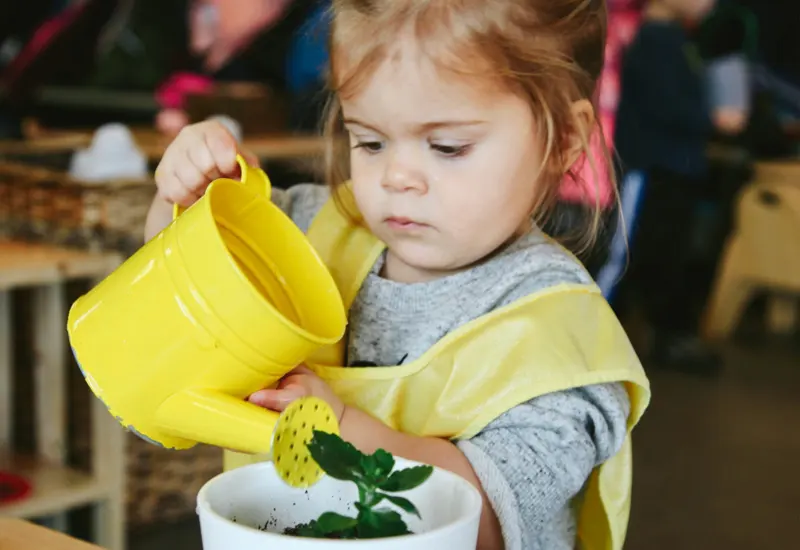
- Sweeping floors.
- Polishing furniture.
- Washing dishes.
- Watering plants.
- Dusting surfaces.
Grace and Courtesy
Children develop social etiquette and respect for others.

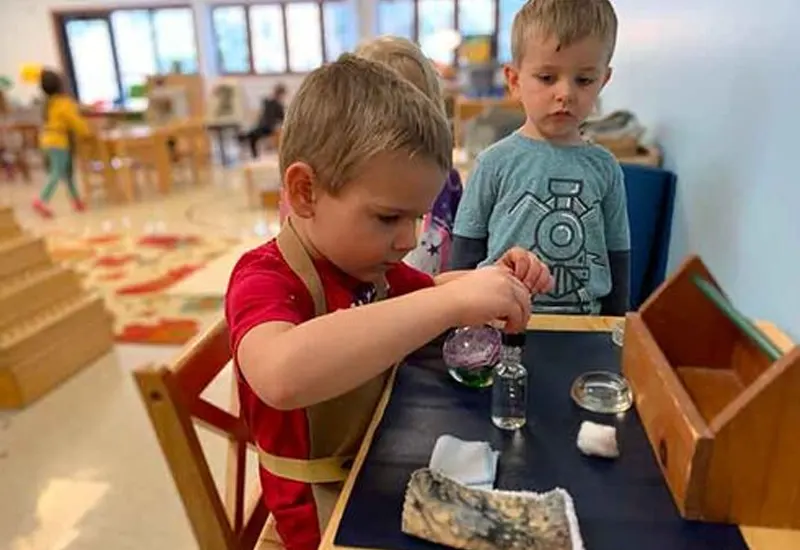
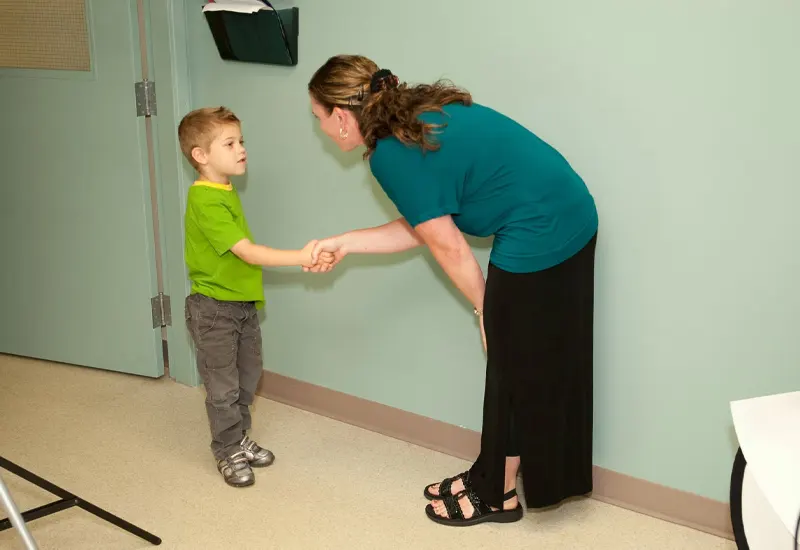
- Practicing greetings.
- Saying “please” and “thank you.”
- Waiting patiently for their turn.
- Apologizing politely.
Controlled Movement
This group focuses on body awareness and coordination.
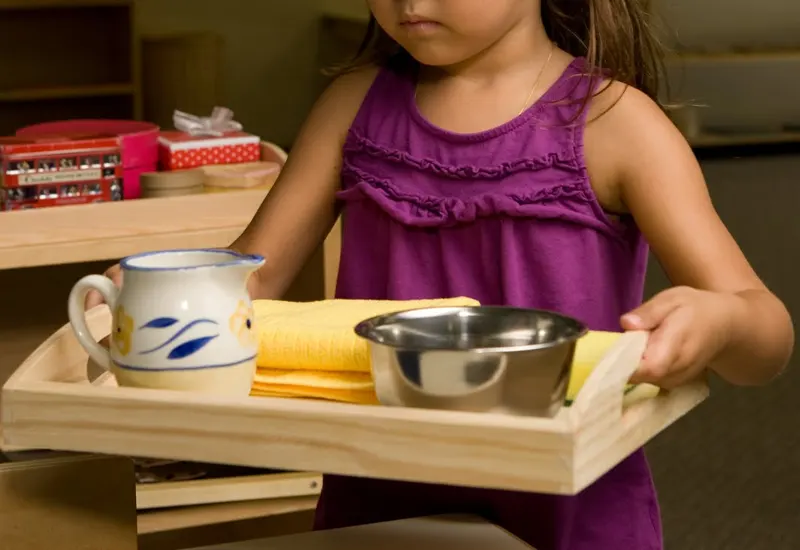

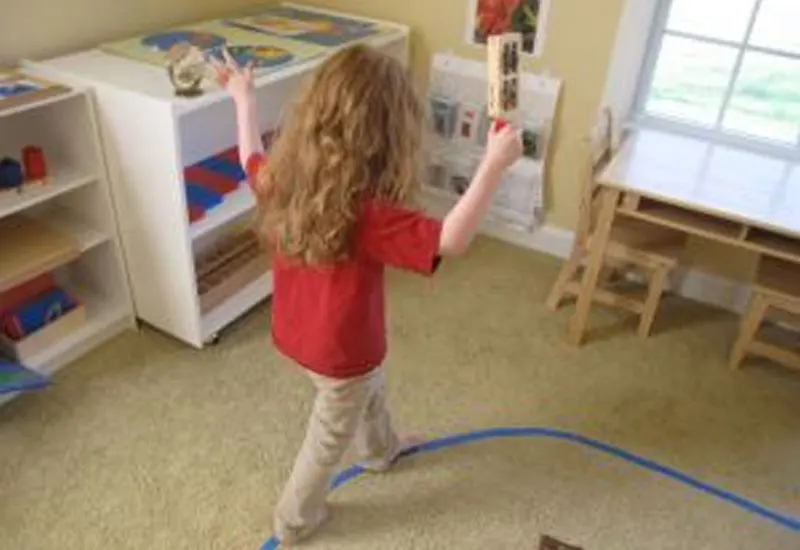
- Walking on a line.
- Carrying objects carefully.
- Pouring water without spilling.
- Practicing balancing activities.
Montessori Practical Life Skills
The Montessori practical life skills framework covers many activities, promoting self-sufficiency and confidence.
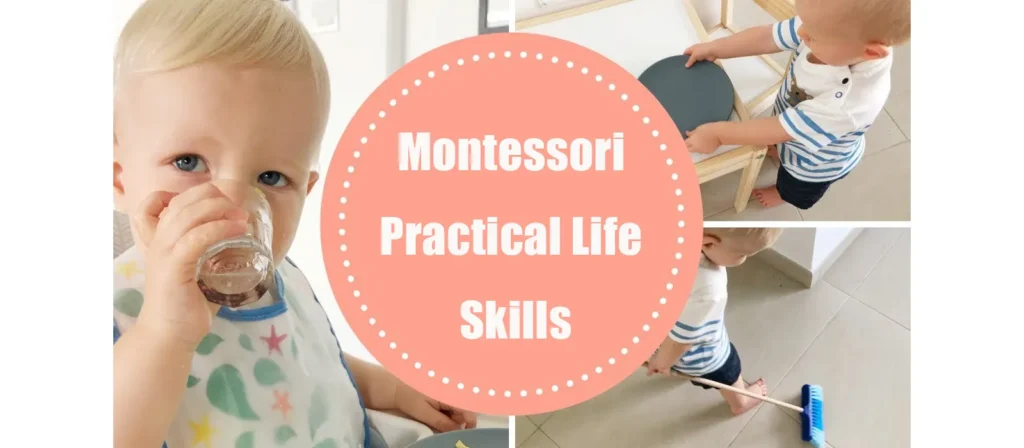
Self-Care
- Washing face and hands.
- Learning to button and zip clothes.
- Folding small items like towels.
- Cleaning shoes.
Caring for the Environment
- Washing windows and mirrors.
- Cleaning tables.
- Organizing toys.
- Setting the table for meals.
Caring for Others
- Feeding pets or filling water bowls.
- Assisting siblings with small tasks.
- Preparing snacks for family members.
- Writing thank-you cards.
In the Kitchen
- Cutting soft fruits with child-safe knives.
- Spreading butter or jam.
- Stirring batter for baking.
- Pouring liquids into glasses.
Don’t just dream it, design it! Let’s chat about your custom furniture needs!
Outdoors
- Gardening tasks like planting seeds.
- Raking leaves or shoveling snow.
- Observing insects or nature walks.
- Collecting natural materials for crafts.
Gross Motor Skills
- Carrying heavier objects.
- Climbing steps safely.
- Pushing and pulling small wagons.
Fine Motor Skills
- Using tweezers to pick up small items.
- Threading beads or buttons.
- Cutting paper with scissors.
- Writing letters with a pencil.
Clothing Care
- Folding larger clothes like shirts.
- Hanging clothes to dry.
- Ironing simple items with supervision.
These tasks provide a comprehensive list of Montessori practical life activities that cater to all areas of a child’s growth.
Characteristics of Montessori Practical Life Materials
The Montessori practical life materials are designed to engage children while promoting skill development and independence. These materials are not random—they are meticulously curated to meet the child’s developmental needs and align with the principles of Montessori education.
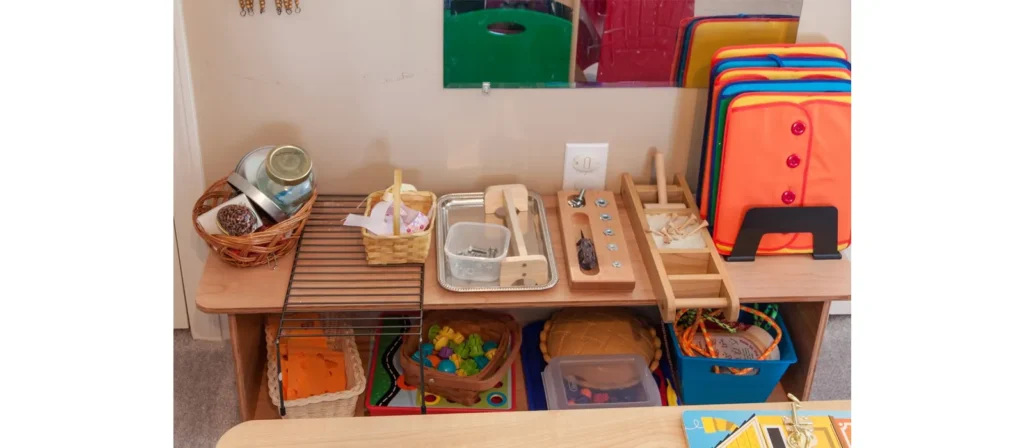
1. Child-sized and Functional
The Montessori materials are proportioned to fit a child’s size and abilities. For example, a child-sized broom or pitcher is easier for small hands to grip and manipulate, allowing children to work comfortably. The functionality of these tools mimics their adult counterparts, ensuring that children feel they are engaging in meaningful activities rather than play.
2. Natural and Aesthetic
Montessori practical life materials are often made from natural materials like wood, metal, and glass. These materials are not only more durable but also provide sensory feedback.
3. Simple and Purposeful
Each item has a clear purpose and is simple in design. This clarity helps children focus on the task without being distracted by unnecessary embellishments. For example, a plain white tray used for carrying objects emphasizes the process of carrying rather than the appearance of the tray.
4. Attractive and Inviting
Materials in the Montessori practical life area are visually appealing to spark interest. The tools are arranged in an organized and inviting manner, encouraging children to interact with them. A well-organized environment communicates respect and helps children internalize the value of order.
Don’t just dream it, design it! Let’s chat about your custom furniture needs!
5. Designed for Self-Correction
Many Montessori practical life exercises involve self-correcting materials. For instance, if a child spills water while pouring, the spill immediately indicates a mistake. This allows the child to recognize and fix the issue independently, fostering problem-solving skills and accountability.
6. Durable and Safe
While made from natural materials, the items are sturdy enough to withstand repeated use. Additionally, all materials are designed with safety in mind—for example, pitchers with rounded edges or knives with child-safe blades. These considerations ensure children can explore freely without unnecessary risk.
7. Culturally Relevant
In Montessori environments worldwide, materials are adapted to reflect the local culture and customs. For example, a Montessori practical life activity in one country might involve chopsticks, while another uses forks and knives. This ensures that the child’s learning is grounded in their cultural context.
Montessori Practical Life Skills by Age
| Age Range | Skills | Examples |
|---|---|---|
| 12 months – 1 year | Developing motor coordination and simple actions. | Carrying lightweight items, stacking toys, placing objects into baskets, holding a spoon, wiping surfaces with a cloth, drinking from a small open cup. |
| 1–3 years | Building independence and handling simple tasks. | Carrying lightweight items, stacking toys, placing objects into baskets, holding a spoon, wiping surfaces with a cloth, and drinking from a small open cup. |
| 3–6 years | Refining skills and taking responsibility for daily routines. | Pouring water into cups, dressing with help, feeding pets, sorting laundry, wiping spills, stacking plates, sweeping with a small broom, and peeling bananas. |
| 6–12 years | Taking on advanced tasks and showing initiative. | Washing dishes, planting seeds, folding laundry, setting the table, organizing bookshelves, cutting fruit, sweeping larger areas, and dusting shelves. |
Tips for Bringing Practical Life Activities into the Home
- Start Simple: Choose activities like wiping spills or pouring water to build initial confidence.
- Child-Friendly Materials: Use Montessori practical life materials like child-sized brooms, mops, and utensils.
- Create a Practical Life Area Montessori: Designate a space where tools and materials are easily accessible to children.
- Be Patient: Allow children to learn through trial and error.
- Encourage Ownership: Let children take pride in tasks like organizing their rooms.
- Integrate Tasks into Routine: Make activities like meal preparation or tidying up part of daily life.
By incorporating Montessori practical life at home, parents can help children develop essential skills while fostering independence and self-discipline.
Conclusion
Montessori practical life exercises are the heart of a child’s journey toward independence and confidence. Whether practiced in the classroom or at home, these activities provide children with valuable life skills while fostering development. Start integrating montessori practical life ideas today and watch your child flourish!
